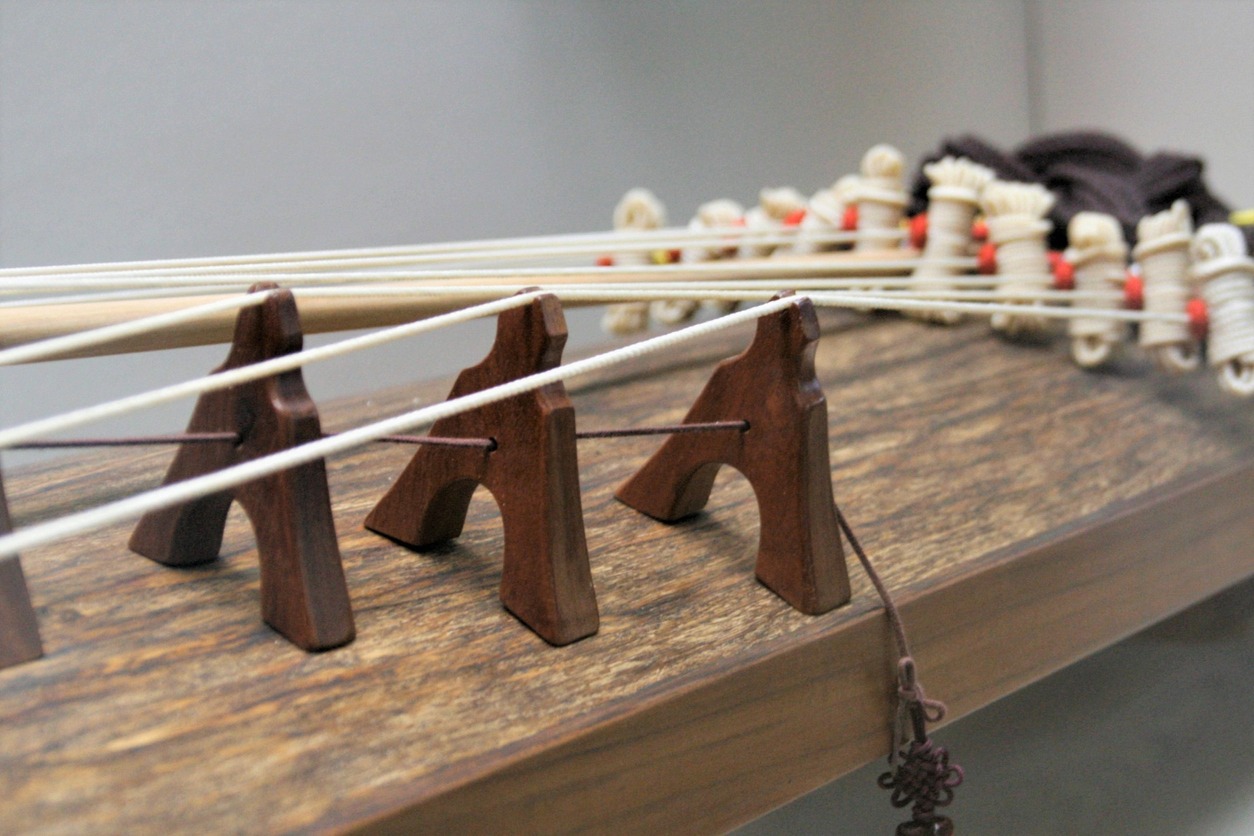Korean is renowned for its several types of zithers. The word zither is a term used in describing a family of stringed instruments. These types of instruments were usually played in a variety of ways, including plucking, bowed, hammered, or strummed. One of these zithers typed instrument is the Ajaeng.
Ajaeng is a stringed instrument that is notable in Korea. It is part of the zither, a class of stringed instruments. According to the history, in the late 7th century, the Chinese music was imported in the Korean Peninsula before and after the unification of the three kingdoms in Korea, the Silla, Hubaekje, and Hugoguryeo. However, after about 260 years, the descendants of the Peakje and Koguryo started a rebellious movement. Consequently, the Silla was eventually replaced by the Koguryo Dynasty (which later changed into Goryeo). Among these three periods, the song’s court music was widely accepted during the Goryeo period. That time, the ajaeng instrument thrives in Korea while it declined in China. Since then, from its derivative name, yazheng, it then became the Korean, Ajaeng.
In the year 1430, a particular organization called Uiryesangjeongso made an effort to establish music as well as rites. It was also the same organization that had included the Ajaeng to the instrument of Dangak, traditional Korean court music that was adapted from the Tang Dynasty Chinese Music during the unified Silla period. This instrument was also mentioned in the annals of King Sejong, Five Manner. It stated the appearance of Ajaeng having seven lines, referring to its strings.
What Does the Ajaeng Look Like?
Ajaeng is a broad zither instrument that has strings made out of twisted silk and a bow made out of forsythia wood. This stringed instrument initially has seven strings. This seven-stringed Ajaeng, also called as Jeongak Ajaeng, was usually used in court music. The jeongak added a texture to the bass section of an orchestra. Meanwhile, there is also an eight-stringed ajaeng called sanjo ajaeng, which is used more often in chamber music, folk songs, and shaman ensembles. The sanjo ajaeng is the smaller version of the Ajaeng, which is about 120 cm, or forty-seven inches long. In addition to that, a nine-stringed ajaeng was used as a solo instrument that is usually played with a melancholy tone. Interestingly, there was also an ajaeng instrument that has ten or twelve strings. Although the Ajaeng is a Korean instrument, it is derived from the Chinese yazheng, and Vietnamese court music, Nhã nhạc.
How is the Ajaeng Played?
Musical instruments like the harpoon or gayageum are generally played while the instrument is placed on the performer’s lap. However, the Ajaeng is placed on a pedestal called Chosang, where the Ajaeng’s head is hung at a specific angle. This instrument is played while the performer is sitting on the floor. In playing the Ajaeng, the player traditionally bows the strings to the right of the bridges, while the player’s left hand varied vibratos and pitches by pressing the strings on the other side of the instrument’s bridges.
With regard to the sound of Ajaeng, this instrument has a similar tone of a cello, although this one is a little raspier. As it was mentioned, the bow of the Ajaeng is made out of the forsythia tree. It was then peeled and smoothen, making a ridge. In addition, a ribbon is used to paint the rosin as it reinforces the rubbing sound of the string. However, some contemporary players prefer using a horsehair bow rather than a stick, believing that horsehair produces a smoother sound. This instrument was usually used in court, folk music, aristocratic music, contemporary classical music, as well as film scores.
Aside from using a bow, the Ajaeng can also be plucked, much like the instrument gayageum. With this, the Chinese used to dub the Ajaeng as the ‘scratch zither’ since it produces a rasping sound when plucked. Just like in the case of gayageum, the Ajaeng used in court has a much broader soundboard than that used in folk music and has strings that are further apart. Interestingly, the ajaeng instrument was also considered as one of the expressive Korean instruments next to the human’s voice.

